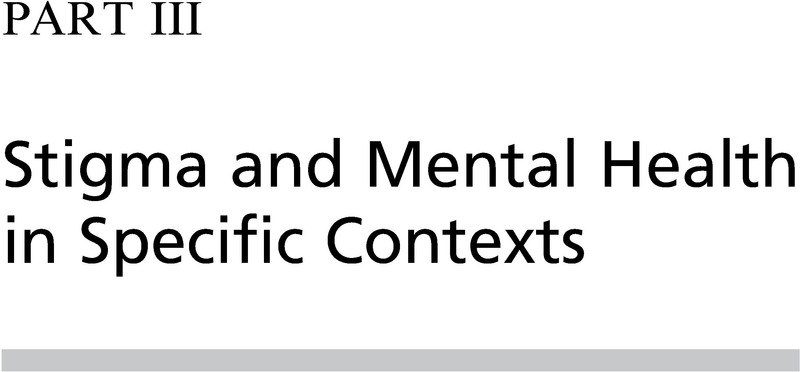Book contents
- The Cambridge Handbook of Stigma and Mental Health
- The Cambridge Handbook of Stigma and Mental Health
- Copyright page
- Contents
- Figures
- Tables
- Contributors
- 1 Introduction to the Handbook of Stigma and Mental Health
- Part I Understanding Stigma and Mental Health
- Part II Impact of Stigma on Mental Health
- Part III Stigma and Mental Health in Specific Contexts
- Part IV Reducing Stigma to Promote Mental Health
- Index
- References
Part III - Stigma and Mental Health in Specific Contexts
Published online by Cambridge University Press: 28 July 2022
- The Cambridge Handbook of Stigma and Mental Health
- The Cambridge Handbook of Stigma and Mental Health
- Copyright page
- Contents
- Figures
- Tables
- Contributors
- 1 Introduction to the Handbook of Stigma and Mental Health
- Part I Understanding Stigma and Mental Health
- Part II Impact of Stigma on Mental Health
- Part III Stigma and Mental Health in Specific Contexts
- Part IV Reducing Stigma to Promote Mental Health
- Index
- References
Summary

- Type
- Chapter
- Information
- The Cambridge Handbook of Stigma and Mental Health , pp. 185 - 366Publisher: Cambridge University PressPrint publication year: 2022



